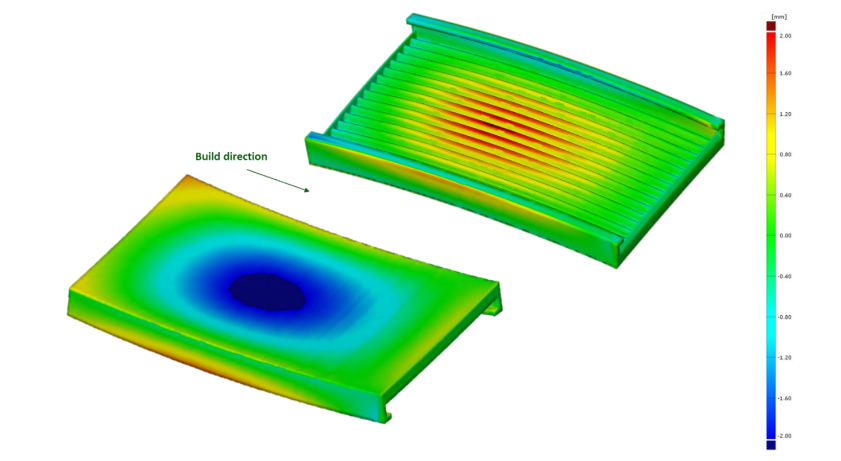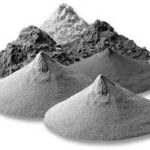

In the recent ‘Numerical prediction of distortion. Benchmarking of Additive Works Amphion against real AM component,’ authors Nils Keller and Michal Prugarewicz explore how far metal 3D printing has come. Looking back on a project in 2015, the authors explain that the first pre-serial, completely 3D printed gas turbine part was fabricated and released. Meant for commercial use, manufacturing of this part also meant validation of AM powder technology for an industrial gas turbine.
Researchers continued to work on the design, and it evolved over time—so far as to be installed in machinery for a customer; however, issues with distortion continued to be a problem and project managers realized a solution would be required for ultimate success in production. What was needed was a method for controlling distortion while engineers were involved in the build process.
While an application with a nickel-based superalloy Inconel IN738 was considered a ‘main point of interest’ for both validation and development, the project team discovered it to be the most challenging issue due the greatest amount of deformation. There was no suitable software for dealing with these issues such as offering simulation exercises; however, the project team was able to create a standard FE software, and scanning was successful afterward. Now, for 2019, the software offers a choice for simulation during the build process, along with a way to ‘compensate distortion of AM components.’
One part of this project also involved ‘benchmarking’ the Additive Works Amphyon, centered around developing the turbine component and better performance in the software. A 3D printed generic model was created, as the project team relied on dimensions from an ‘ex-service part.’ They were able to reverse engineer the design of a part used and then removed in 2016, with mechanical properties based on previous research and writing regarding material behavior.
In this study, applied strain @RT was set up to 1100 MPa and 1.487 % respectively, with the expectation that temperature would not increase substantially while printing.

A focus on temperatures helped derive strategies for thermal stability as the researchers assessed the position and design of support structures, distortion, and places that could lead to damage. Calculations were made using Amphyon software, with comparisons between both nominal and distorted models.
“Compensation of distortion can be done automatically in Amphyon with reversed values,” explained the researchers. “Shape of distortion and a value of distortion is in line of experience with same order of magnitude.”
During the second assessment, the project team created a simple DOE for displaying distortion deviation due to scatter of material properties, modifying yield stress (YS) and strains (EPS). Ultimately, because of the ‘complexity of assessment,’ the researchers recommended good cooperation between those involved such as designers, engineers, and material science and manufacturing specialists.
“A numerical approach of prediction of distortion may lead to a significant reduction of design concepts and try-error manufacturing approaches which control costs and lead-time of development of additively manufactured parts and therefore [are] recommended to be performed,” concluded the researchers.
Researchers continue to explore better ways to 3D print in metal, as well as improve mechanical properties from alloys, to shape memory, to innovative composites, and more.
What do you think of this news? Let us know your thoughts; join the discussion of this and other 3D printing topics at 3DPrintBoard.com.
[Source / Images: ‘Numerical prediction of distortion. Benchmarking of Additive Works Amphyon against real AM component’]
If you're looking to get architectural 3D animation in the USA, our service provides an exceptional way to bring your architectural concepts to life through dynamic, immersive visuals. Through our platform, you can easily request high-quality 3D animations that showcase your designs in motion, offering a detailed view of your project from multiple angles and perspectives. Whether it's for a real estate development, a commercial building, or an urban planning project, our expert team ensures that every detail is captured in a visually compelling animation.
Through our website, you can seamlessly get architectural 3D animation tailored to your project’s specific needs. With our help, you can offer potential clients or investors an engaging experience that goes beyond static images. By integrating CGI animations with real-world settings, lighting, and textures, our team creates a lifelike experience that allows your audience to interact with your project as though it were already built. This service is perfect for presenting complex designs in a clear, visually attractive way that stands out in the competitive architectural market.




